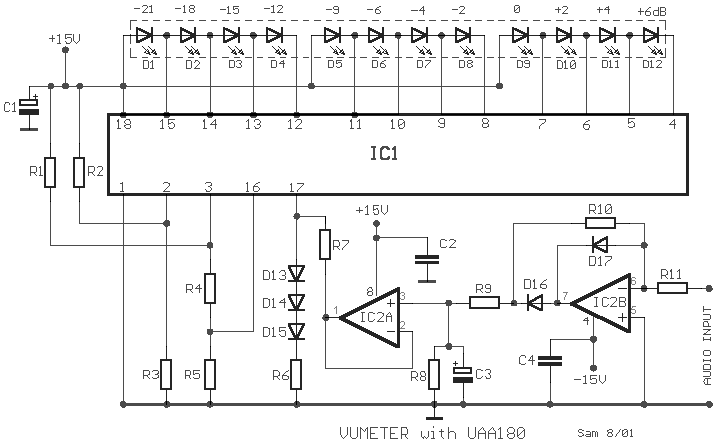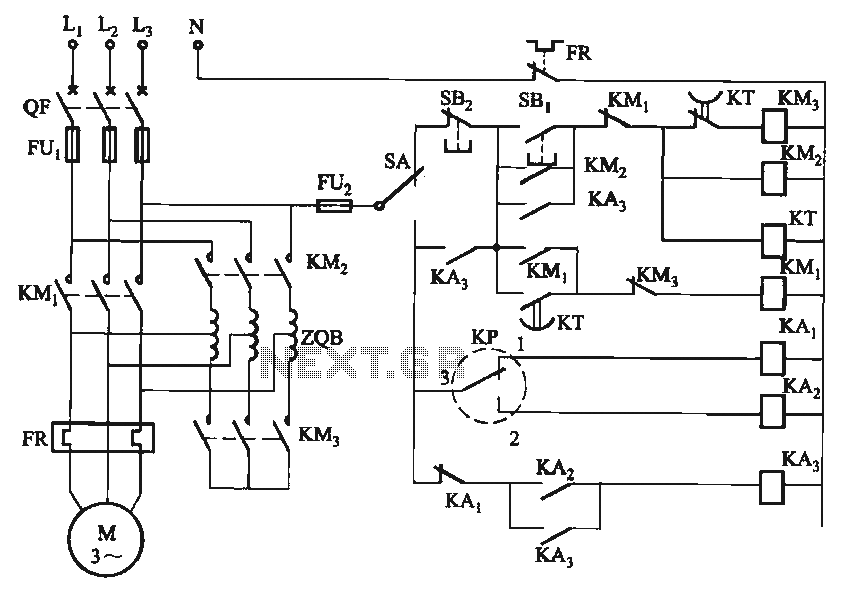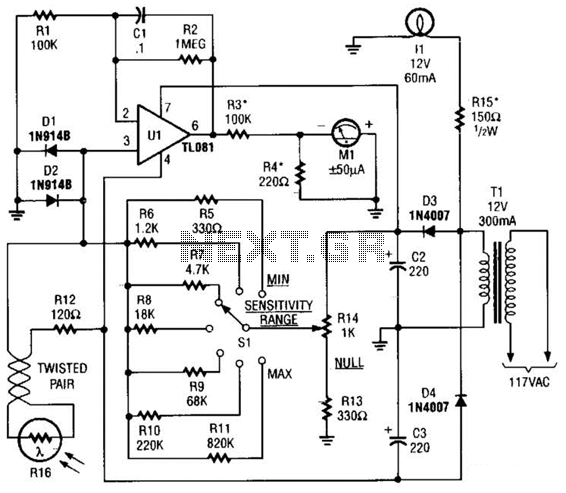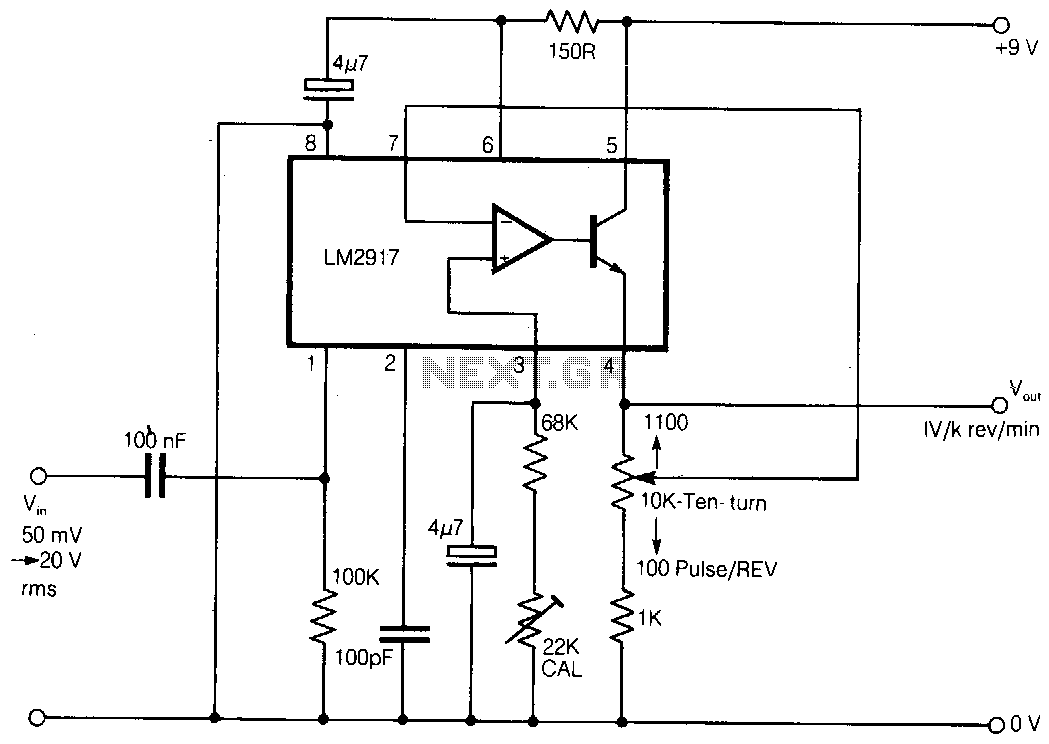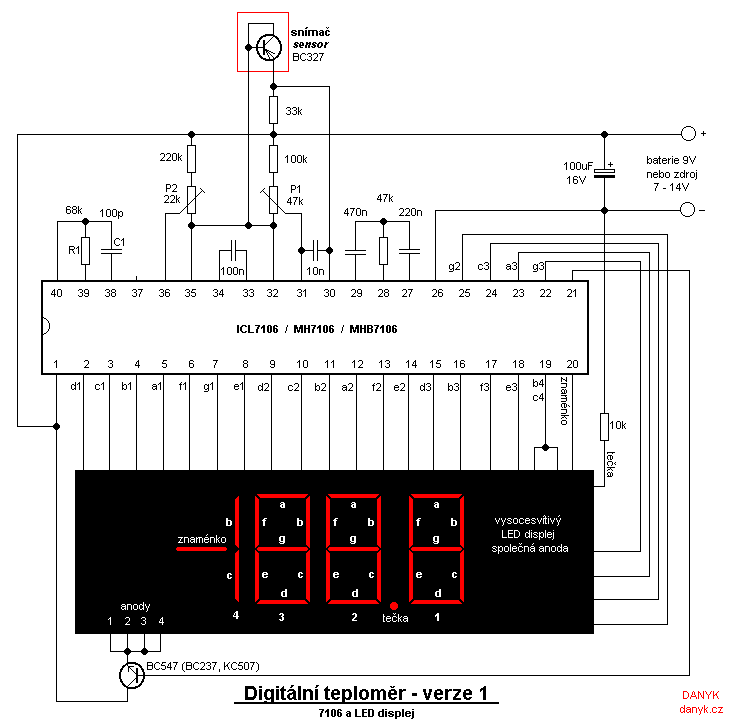
Sound Level Meter
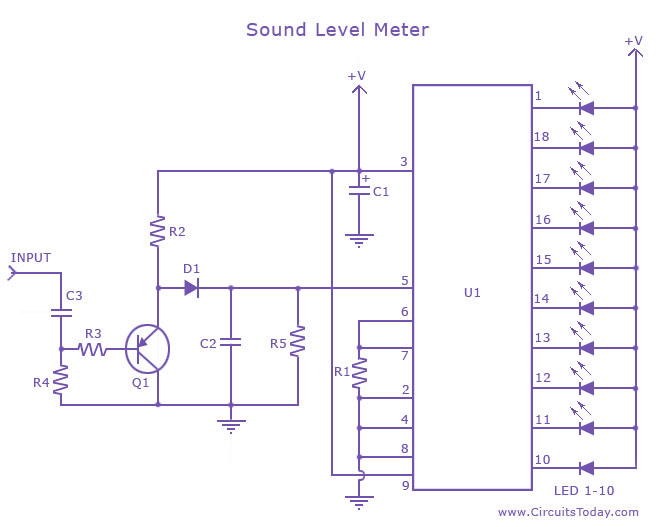
A sound level meter circuit with a diagram and schematic using the IC LM3915, which is an audio level measurement chip. It is used to display the sound level of an amplifier or a microphone.
The sound level meter circuit utilizing the LM3915 integrated circuit is designed to provide a visual representation of audio signal levels. The LM3915 is a bar graph or LED dot display driver that can indicate voltage levels corresponding to audio signals, making it suitable for applications in audio equipment and sound measurement.
The circuit typically consists of the LM3915 IC, a power supply, resistors, capacitors, and a display consisting of either LEDs or an LCD. The input audio signal is fed into the circuit through a microphone or audio amplifier output. The IC processes the incoming audio signal and converts it into a proportional voltage level.
The configuration of the LM3915 can be set to operate in either bar graph mode or dot mode, depending on the application requirements. The output pins of the IC are connected to a series of LEDs, which light up in response to the input audio level. This visual feedback allows users to easily monitor sound levels in real-time.
To enhance the functionality of the sound level meter, additional components such as a filter circuit may be included to eliminate noise and ensure accurate readings. The circuit can also be calibrated to adjust the sensitivity of the meter, allowing for precise measurement across different audio environments.
In summary, the sound level meter circuit utilizing the LM3915 is an effective tool for measuring and displaying audio levels, making it valuable in various audio applications, from professional sound systems to home audio equipment.A sound level meter circuit with diagram and schematic using IC LM 3915,which is an audio level measurement chip.Used to display amplifier sound level or a microphone sound level.. 🔗 External reference
The sound level meter circuit utilizing the LM3915 integrated circuit is designed to provide a visual representation of audio signal levels. The LM3915 is a bar graph or LED dot display driver that can indicate voltage levels corresponding to audio signals, making it suitable for applications in audio equipment and sound measurement.
The circuit typically consists of the LM3915 IC, a power supply, resistors, capacitors, and a display consisting of either LEDs or an LCD. The input audio signal is fed into the circuit through a microphone or audio amplifier output. The IC processes the incoming audio signal and converts it into a proportional voltage level.
The configuration of the LM3915 can be set to operate in either bar graph mode or dot mode, depending on the application requirements. The output pins of the IC are connected to a series of LEDs, which light up in response to the input audio level. This visual feedback allows users to easily monitor sound levels in real-time.
To enhance the functionality of the sound level meter, additional components such as a filter circuit may be included to eliminate noise and ensure accurate readings. The circuit can also be calibrated to adjust the sensitivity of the meter, allowing for precise measurement across different audio environments.
In summary, the sound level meter circuit utilizing the LM3915 is an effective tool for measuring and displaying audio levels, making it valuable in various audio applications, from professional sound systems to home audio equipment.A sound level meter circuit with diagram and schematic using IC LM 3915,which is an audio level measurement chip.Used to display amplifier sound level or a microphone sound level.. 🔗 External reference
Warning: include(partials/cookie-banner.php): Failed to open stream: Permission denied in /var/www/html/nextgr/view-circuit.php on line 713
Warning: include(): Failed opening 'partials/cookie-banner.php' for inclusion (include_path='.:/usr/share/php') in /var/www/html/nextgr/view-circuit.php on line 713
